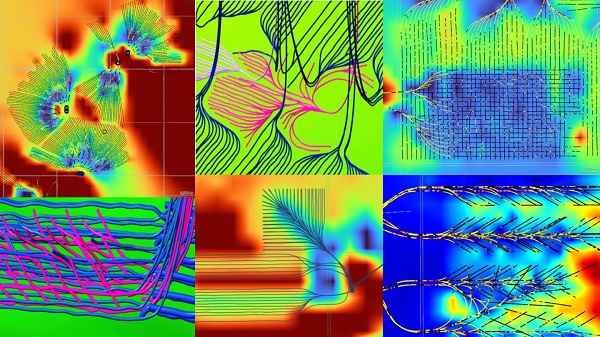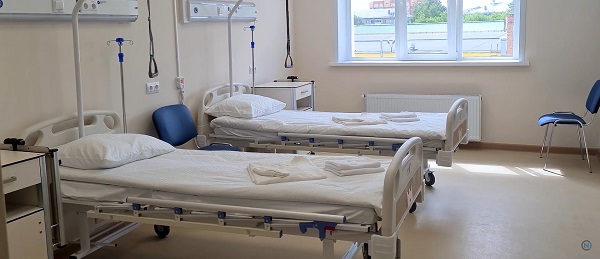Alberta
Investigation concludes suspect convinced girlfriend to lie to police

News Release from ASIRT (Alberta Serious Incident Response Team)
Investigation concluded into use of force during EPS arrest
On Aug. 1, 2018, pursuant to Section 46.1 of the Police Act, the Director of Law Enforcement (DLE) assigned ASIRT to investigate the circumstances surrounding a vehicle pursuit and subsequent arrest of a 31-year-old man. The man had been arrested by members of the Edmonton Police Service (EPS) on July 30 following a brief vehicle pursuit which had resulted in serious injury to an uninvolved pedestrian, and was terminated by intentional contact made by two EPS vehicles.
As is required by the Police Act, these events were reported to the DLE and, based on the information that was known at the time, EPS was directed to maintain conduct of the investigation. Several days later, while being interviewed in relation to that investigation, the man alleged that he had been assaulted during the course of his arrest and had sustained several injuries. This additional information was again reported to the DLE, and ASIRT was directed to assume conduct of the investigation into both the pursuit and any force used during the subsequent arrest of the affected person.
On July 30, 2018, at approximately 12:30 a.m., EPS members operating a marked police vehicle conducted a database check on a red Buick Rendezvous SUV, which revealed the vehicle’s licence plate had been reported stolen. Members followed the vehicle without activating their emergency equipment until the SUV stopped and the driver, later identified as the 31-year-old man, exited. Police then activated their vehicle’s emergency equipment, but the man re-entered the SUV and drove away at a high rate of speed.
Police followed the SUV with emergency equipment activated, and observed the SUV run a red light at 101 Street and 107 Avenue. At this point, several other EPS vehicles had entered the area and additional members were able to observe the SUV. During its flight from police, the vehicle mounted the sidewalk at 102 Street and struck a female pedestrian and a light post. Officers who observed the collision formed the opinion that the collision with the pedestrian was deliberate. Overt action had been required to mount the sidewalk and strike the pedestrian, who was standing in a well-lit area. As well, the man’s vehicle had had an unobstructed path forward with no observable reason or cause to leave the roadway and mount the sidewalk.
After striking the pedestrian and the pole, the SUV continued east on 107 Avenue, with police continuing pursuit. A second EPS vehicle remained at the scene of the collision to render aid to the female pedestrian, who had sustained numerous serious injuries. Having witnessed what appeared to be the deliberate use of the SUV to strike a pedestrian, the driver of the lead EPS vehicle indicated that he believed it was necessary to attempt to end the criminal flight using deliberate vehicle contact. He deliberately struck the rear driver’s side of the SUV, but this tactic failed to stop the vehicle. A marked police van subsequently made deliberate contact with the SUV, this time striking it head-on, and brought the SUV to a halt. The man exited the driver’s seat of the SUV and fled on foot southbound on 103 Street.
Three police officers pursued the man on foot. During this pursuit, the lead officer deployed his conducted energy weapon (CEW), which was successful in bringing the man to the ground. The officer verbally commanded the man to roll onto his stomach, as he had turned onto his back. The man was initially compliant, but resisted when officers attempted to handcuff him. The officer reactivated the CEW, and the man was handcuffed while the CEW was still activated.
Once in custody, the man was observed to be sweating profusely, making spastic movements and acting in a manner that indicated to the arresting officers that he was under the influence of methamphetamine. Accordingly, after searching him, EMS transported the man to hospital.
Medical records obtained during the course of the ASIRT investigation confirmed that at the time of his examination at hospital, the man had a two-centimetre laceration to his forehead which was not actively bleeding, two abrasions on his shoulder area and mild swelling of the front of his head. A CT scan revealed the presence of an age-indeterminate nasal fracture, meaning that doctors were unable to determine whether the nasal fracture had occurred during this event or earlier. Medical staff determined that the man was fit for incarceration, and released him from hospital that same day.
As previously indicated, shortly after he was incarcerated, EPS interviewed the man in the course of their investigation. During that interview, the man described his arrest, discussed his injuries, and asked the interviewer about the condition of the woman he had hit during the incident. Once ASIRT assumed conduct of the investigation, the man was interviewed again – this time by an ASIRT investigator. The man described his flight from police and the collision with the pedestrian but stated that a police vehicle had struck him before the collision with the pedestrian. He also stated that he did not remember hitting anyone.
The man stated that his girlfriend ran away from police following the collision but stopped to watch his arrest. He stated that she told him that at one point six police officers were beating him. The man stated that he did not remember this, but recommended that ASIRT interview his girlfriend. He further stated that at the time of the incident he was under the influence of methamphetamine, which he had used approximately five hours before the incident. He stated that his girlfriend was under the influence of heroin, which she had consumed approximately one hour before the incident.
The man’s girlfriend was interviewed twice during the course of this investigation, once by EPS and once by ASIRT. During the first interview by EPS, she stated that she had been the lone passenger in the vehicle being operated by her boyfriend. She indicated that he had lost control of the vehicle while turning and began to drive on the sidewalk before striking a lamppost. She stated that neither of them was aware at the time that they had struck a pedestrian. During the statement, she indicated that when the final collision with the police vehicle occurred, the man jumped out of the vehicle first and was pursued by police. She stated that she ran from the scene to a friend’s house, where, through a third party, she contacted her boyfriend in jail, but advised that they did not discuss the incident. In addition to describing the events, she confirmed the man’s statements regarding her use of heroin prior to the incident.
The next day, after the case was assigned to ASIRT, the man’s girlfriend was interviewed again by ASIRT investigators. During this interview, she confirmed that she had recently spoken to her boyfriend and now suggested that the police had struck the SUV, causing the collision with the pedestrian and minimizing the man’s role in the incident. She now stated that following the final collision, she ran and hid under a car that was approximately 10 to 20 metres away. As she watched her boyfriend’s arrest, she alleged she saw police assault him.
As a result of the discrepancies between their various versions of the incident and the conversations that took place between them after the man’s arrest, ASIRT investigators took the unusual step of obtaining a judicial authorization for access to the man’s communications while in custody at the Edmonton Remand Centre. The recorded calls revealed repeated attempts by the man to influence the evidence of his girlfriend in conversations directly with her and with other parties. On several occasions, the man referenced the impact that her assistance would have on his chances of getting bail on the charges arising from the incident. During two of the calls, the man’s girlfriend described the striking of the pedestrian, saying that she remembered her being in the way, running and screaming. The man advised her to downplay that aspect of the story when dealing with the police, and to state that she was not sure of the details.
During the calls, the man repeatedly exaggerated the extent of his dealings with police, stating that he had smashed four police vehicles, that he had four CEWs used upon him, had received four broken bones in his face during the incident, and had sustained dog bites during his arrest. His girlfriend’s response to these statements clearly demonstrated that she had not witnessed the arrest. It appeared that in a number of the exchanges, the man attempted to instil fear in his girlfriend in order to ensure her cooperation, and encouraged her to turn herself in to police, which he repeatedly suggested would help him.
In addition to the recorded calls, the independent evidence of three civilian witnesses and CCTV video from an area business confirmed that the man’s girlfriend did not witness his arrest as described in her second statement, but rather had immediately fled the area as she had initially described.
Despite being under no obligation to do so, each of the three police officers directly involved in the arrest of the man provided voluntary statements to ASIRT for use during the investigation. One officer acknowledged deploying his CEW during the foot pursuit of the man, which resulted in the man falling to the ground. When the man continued to struggle on the ground, and was described as actively resistant, the officer reactivated his CEW, which allowed him, with the assistance of the other two involved officers, to place the man in handcuffs. The three officers directly involved in the man’s arrest, along with all witness officers interviewed, denied participating in or witnessing any significant use of force as described by the man and his girlfriend.
On the basis of the information available to police during this incident, they were lawfully placed to arrest the man in relation to a number of Criminal Code offences, including possession of stolen property and criminal flight causing bodily harm. As the officers were engaged in the lawful execution of their duty, they were authorized by Sec. 25 of the Criminal Code to use a reasonable amount of force necessary to carry out their duties.
While the description of the amount of force used during the incident varies widely between the descriptions provided by police and the man and his girlfriend, when looking at the evidence in this matter as a whole, it is impossible to place any weight whatsoever on the versions offered by the man and his girlfriend.
In addition to the significant inconsistencies between the versions offered by both the man and his girlfriend in their own multiple statements, which would on their own significantly compromise the ability to rely upon their evidence, the recorded attempts by the man to influence the evidence of his girlfriend in hopes of convincing her to tailor her evidence to match his own is fatal to the credibility of both witnesses. Independent evidence conclusively established that the girlfriend was not present to witness the arrest.
Based on the available reliable evidence, the force used to arrest the man was both reasonable and necessary. Once restrained in handcuffs, there were no additional uses of force, and the man was taken into custody without further incident. Furthermore, it is clear from an assessment of all the evidence in this matter that the cause of the initial collision with the pedestrian was the man’s deliberate driving pattern and that there was no physical contact with the SUV by any police vehicle before the pedestrian was struck.
There are no reasonable grounds, nor reasonable suspicion, to believe that any of the officers committed any Criminal Code offence(s). The officers were lawfully placed in their actions with the man, and the force employed was reasonable and necessary in the circumstances. As such, no charges are appropriate, and ASIRT’s involvement in the matter is concluded.
ASIRT’s mandate is to effectively, independently and objectively investigate incidents involving Alberta’s police that have resulted in serious injury or death to any person, as well as serious or sensitive allegations of police misconduct.
Alberta
Alberta bill would protect freedom of expression for doctors, nurses, other professionals

From LifeSiteNews
‘Peterson’s law,’ named for Canadian psychologist Jordan Peterson, was introduced by Alberta Premier Danielle Smith.
Alberta’s Conservative government introduced a new law that will set “clear expectations” for professional regulatory bodies to respect freedom of speech on social media and online for doctors, nurses, engineers, and other professionals.
The new law, named “Peterson’s law” after Canadian psychologist Jordan Peterson, who was canceled by his regulatory body, was introduced Thursday by Alberta Premier Danielle Smith.
“Professionals should never fear losing their license or career because of a social media post, an interview, or a personal opinion expressed on their own time,” Smith said in a press release sent to media and LifeSiteNews.
“Alberta’s government is restoring fairness and neutrality so regulators focus on competence and ethics, not policing beliefs. Every Albertan has the right to speak freely without ideological enforcement or intimidation, and this legislation makes that protection real.”
The law, known as Bill 13, the Regulated Professions Neutrality Act, will “set clear expectations for professional regulatory bodies to ensure professionals’ right to free expression is protected.”
According to the government, the new law will “Limit professional regulatory bodies from disciplining professionals for expressive off-duty conduct, except in specific circumstances such as threats of physical violence or a criminal conviction.”
It will also restrict mandatory training “unrelated to competence or ethics, such as diversity, equity, and inclusion training.”
Bill 13, once it becomes law, which is all but guaranteed as Smith’s United Conservative Party (UCP) holds a majority, will also “create principles of neutrality that prohibit professional regulatory bodies from assigning value, blame or different treatment to individuals based on personally held views or political beliefs.”
As reported by LifeSiteNews, Peterson has been embattled with the College of Psychologists of Ontario (CPO) after it mandated he undergo social media “training” to keep his license following posts he made on X, formerly Twitter, criticizing Trudeau and LGBT activists.
He recently noted how the CPO offered him a deal to “be bought,” in which the legal fees owed to them after losing his court challenge could be waived but only if he agreed to quit his job as a psychologist.
Early this year, LifeSiteNews reported that the CPO had selected Peterson’s “re-education coach” for having publicly opposed the LGBT agenda.
The Alberta government directly referenced Peterson’s (who is from Alberta originally) plight with the CPO, noting “the disciplinary proceedings against Dr. Jordan Peterson by the College of Psychologists of Ontario, demonstrate how regulatory bodies can extend their reach into personal expression rather than professional competence.”
“Similar cases involving nurses, engineers and other professionals revealed a growing pattern: individuals facing investigations, penalties or compulsory ideological training for off-duty expressive conduct. These incidents became a catalyst, confirming the need for clear legislative boundaries that protect free expression while preserving professional standards.”
Alberta Minister of Justice and Attorney General Mickey Amery said regarding Bill 13 that the new law makes that protection of professionals “real and holds professional regulatory bodies to a clear standard.”
Last year, Peterson formally announced his departure from Canada in favor of moving to the United States, saying his birth nation has become a “totalitarian hell hole.”
Alberta
‘Weird and wonderful’ wells are boosting oil production in Alberta and Saskatchewan

From the Canadian Energy Centre
Multilateral designs lift more energy with a smaller environmental footprint
A “weird and wonderful” drilling innovation in Alberta is helping producers tap more oil and gas at lower cost and with less environmental impact.
With names like fishbone, fan, comb-over and stingray, “multilateral” wells turn a single wellbore from the surface into multiple horizontal legs underground.
“They do look spectacular, and they are making quite a bit of money for small companies, so there’s a lot of interest from investors,” said Calin Dragoie, vice-president of geoscience with Calgary-based Chinook Consulting Services.
Dragoie, who has extensively studied the use of multilateral wells, said the technology takes horizontal drilling — which itself revolutionized oil and gas production — to the next level.
“It’s something that was not invented in Canada, but was perfected here. And it’s something that I think in the next few years will be exported as a technology to other parts of the world,” he said.
Dragoie’s research found that in 2015 less than 10 per cent of metres drilled in Western Canada came from multilateral wells. By last year, that share had climbed to nearly 60 per cent.
Royalty incentives in Alberta have accelerated the trend, and Saskatchewan has introduced similar policy.
Multilaterals first emerged alongside horizontal drilling in the late 1990s and early 2000s, Dragoie said. But today’s multilaterals are longer, more complex and more productive.
The main play is in Alberta’s Marten Hills region, where producers are using multilaterals to produce shallow heavy oil.
Today’s average multilateral has about 7.5 horizontal legs from a single surface location, up from four or six just a few years ago, Dragoie said.
One record-setting well in Alberta drilled by Tamarack Valley Energy in 2023 features 11 legs stretching two miles each, for a total subsurface reach of 33 kilometres — the longest well in Canada.
By accessing large volumes of oil and gas from a single surface pad, multilaterals reduce land impact by a factor of five to ten compared to conventional wells, he said.
The designs save money by skipping casing strings and cement in each leg, and production is amplified as a result of increased reservoir contact.
Here are examples of multilateral well design. Images courtesy Chinook Consulting Services.
Parallel
Fishbone
Fan
Waffle
Stingray
Frankenwells
-

 Daily Caller2 days ago
Daily Caller2 days agoTrump Gives Zelenskyy Until Thanksgiving To Agree On Peace Deal, With U.S. Weapons And Intel On The Line
-

 Daily Caller2 days ago
Daily Caller2 days agoBari Weiss Reportedly Planning To Blow Up Legacy Media Giant
-

 Health15 hours ago
Health15 hours agoTens of thousands are dying on waiting lists following decades of media reluctance to debate healthcare
-

 Business2 days ago
Business2 days agoI Was Hired To Root Out Bias At NIH. The Nation’s Health Research Agency Is Still Sick
-

 Carbon Tax19 hours ago
Carbon Tax19 hours agoCarney fails to undo Trudeau’s devastating energy policies
-

 Daily Caller2 days ago
Daily Caller2 days agoMTG Says She’s Resigning From Office
-

 International1 day ago
International1 day agoCanada’s lost decade in foreign policy
-

 Business16 hours ago
Business16 hours agoBudget 2025: Ottawa Fakes a Pivot and Still Spends Like Trudeau










